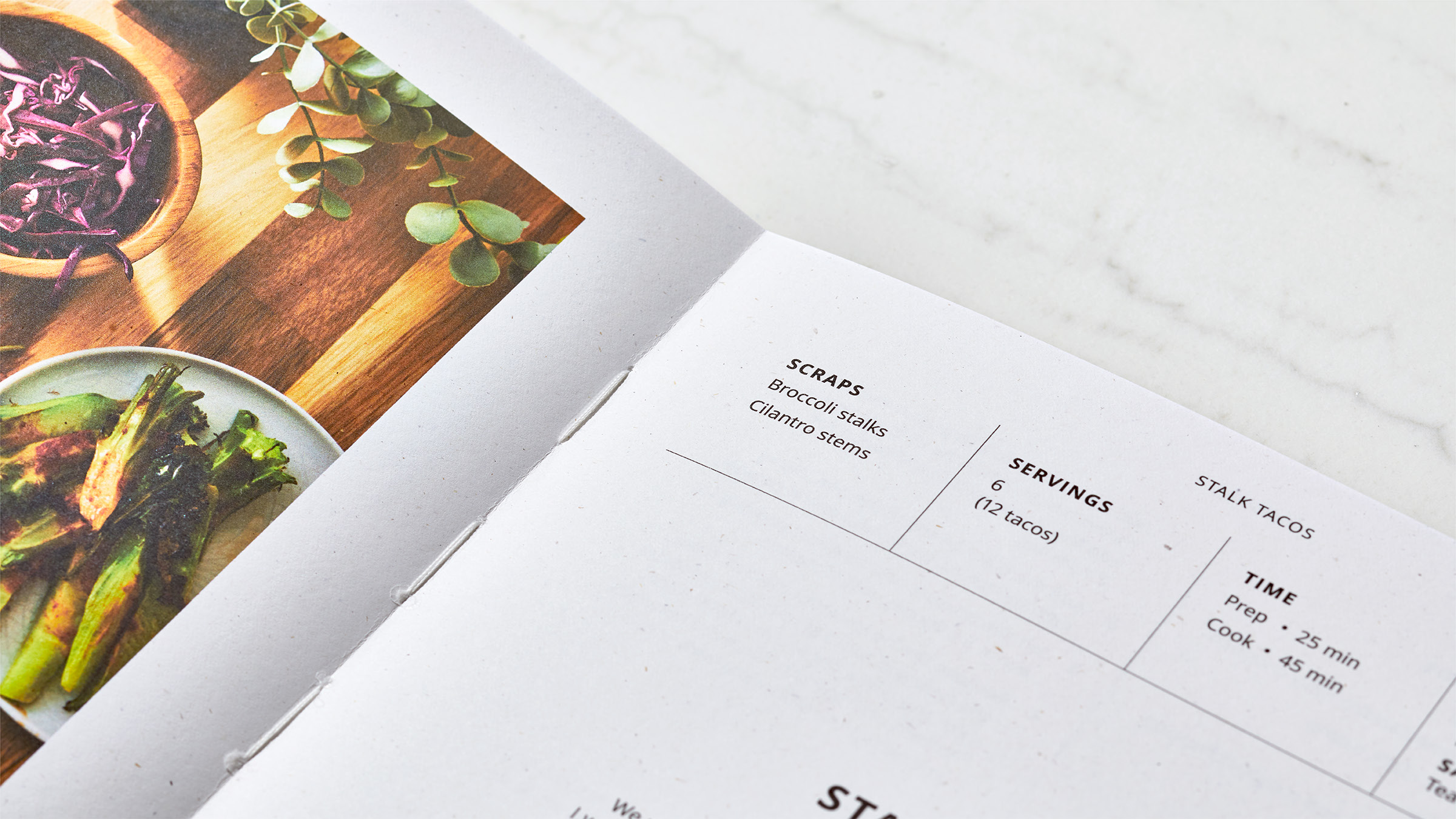2022 Winner






SilverBrand Content
SilverAToMiC Sustainability
BronzeAToMiC Design
BronzeAToMiC IP
IKEA
"The ScrapsBook"
Rethink
"The ScrapsBook"
Rethink
CASE SUMMARY
IKEA is in their ‘leap year of sustainability,’ with all brand-layer communications having a mandate to incorporate and bring to the forefront their belief and value in sustainability. This year, the IKEA Kitchen sale was focused around IKEA’s sustainable product offerings: everything from sustainably made kitchen countertops to faucets that help save water. But they needed to go beyond products to attract new customers to the IKEA brand through their value in sustainability and inspire people with ways to practice sustainability in their own homes.The kitchen is the most wasteful room in the home, where we waste water, electricity, and a lot of food. Food waste is a global problem contributing to the climate crisis, and 1.3 billion tonnes of food are thrown away every year, food that could have been eaten.
While many people want to practice sustainability in the home, it often feels like a monumental task requiring significant capital costs and they quite simply just don’t know where to start. They wanted to inspire people to live less wastefully in their kitchens and show them how they could practice sustainability through small, affordable actions.
The IKEA ScrapsBook was designed for anyone that wants to practice sustainability in their homes, but may not know where to start. They created the IKEA ScrapsBook by collaborating with 10 chefs across North America to bring the book to life including Top Chef Canada’s Trevor Bird to up-and-coming restaurateur Adrian Forte. The limited-edition book itself was designed with sustainability in mind, and features solvent-free inks and recycled paper. The cookbook is filled with 50 recipes that span across cuisines dedicated to cooking with the bits of food you’d usually think of as waste or compost like carrot tops, banana peels, wilting greens, and old beans.
In addition to physical copies of the book, the e-book version was available free on IKEA.ca. The book also lived as a full 360 digital campaign. Photography was used to post recipes on their social channels and they used instagram to turn the Scrapsbook in a cooking show airing each Sunday titled “Scrapcooking Sundays”. Each Sunday, their 10 chefs would take to instagram Live and teach Canadians a new recipe each week.
After the IKEA ScrapsBook launched, people all over the world downloaded it and it became #1 and #2 cookbooks on Apple Books (English and French respectively). The IKEA ScrapsBook immediately generated buzz and was featured on Fast Company, NBC, the Chicago Tribune, and many more. Within the first two weeks of launch, they earned more than 13 million social impressions, 220 million media impressions, 36,000 downloads of the ebook, and saved a lot of
food scraps from being wasted.
IKEA is a design-focused company with sustainability being one of its core values. They used IKEA’s belief in sustainability as the major driver for the design of the book. The book features 214 pages of sustainable culinary content, including 50 food scrap and food waste recipes. But what good is a sustainable cookbook if itself is not designed to the same standard? The protective cover for the book was made with 100% recycled particle board. Layout and design took an editorial approach saving on ink usage. The book used a UV printing process meaning no VOCs released into the environment allowing for a near zero carbon footprint. Paper stock was specifically chosen for 100% post consumer recyclable, Green E and FSC Certified. Even the spine of the book was exposed stitch bound for minimal glue and allowed the book to be broken down and recycled into something new. Best of all they made all their layouts digitally friendly so that they could launch a paperless version for online meaning no
production or waste at all.
They needed to design the ScrapsBook, a tool for sustainability in the home, in a truly sustainable way. To stay true to their sustainability-focused concept, they made choices to ensure the book itself was crafted sustainably, from design to production.
The book was to be compact, functional, and simple; just like IKEA’s design principles. Airy editorial design featuring thinner, smaller font choices and lighter image saturation required less ink to print. They collaborated closely with print producers and printers to determine the lowest possible footprint in methods and materials they could use to design the book. They prioritized sustainable materials, like FSC and Green-E certified post-consumer recycled paper, 100% recycled chipboard, and solvent- and chlorine-free inks. They used UV printing and chose to forego traditional finishes like gloss or embossing to keep their carbon footprint to near-zero. Finally, exposed-stitch binding kept the usage of glue to a minimum in order to ensure the book itself could be recycled easily.
Credits
Chief Creative Officer: Aaron StarkmanExecutive Creative Director: Mike Dubrick
Head of Art & Creative Director: Joel Holtby
Creative Directors: Joel Holtby, Jake Lim
Art Director: Dorota Pankowska
Writer: Justin Santelli
Designer: Erin Struble
Strategist: Shereen Ladha, Stacy Ross
Head of Strategy: Sean McDonald
Group Account Director: Sarah Riedlinger
Account Director: Daniel Riggi,
Account Manager: Megan Christopher
Producer: Narine Artinian, Spencer Houghton
Production Artist: Brad Kumar
Production House: Fuze Reps
Production House Producer: Nicole Gomez
Photographer: Maya Visnyei
Photo Retoucher: Lisa Hordyk
Photography Producer: Sara Melvin
Food Stylist: Claudia Bianchi
Post Production House: R+D Productions
Editor: Leigh O’Neill
Post Production Producer: Todd Harrison
Audio House: Vapor Music
Chief Marketing Officer: Johanna Andren
Director of Brand Marketing: Lena Dukic
Marketing Communications Specialist: Jordan Sequeira